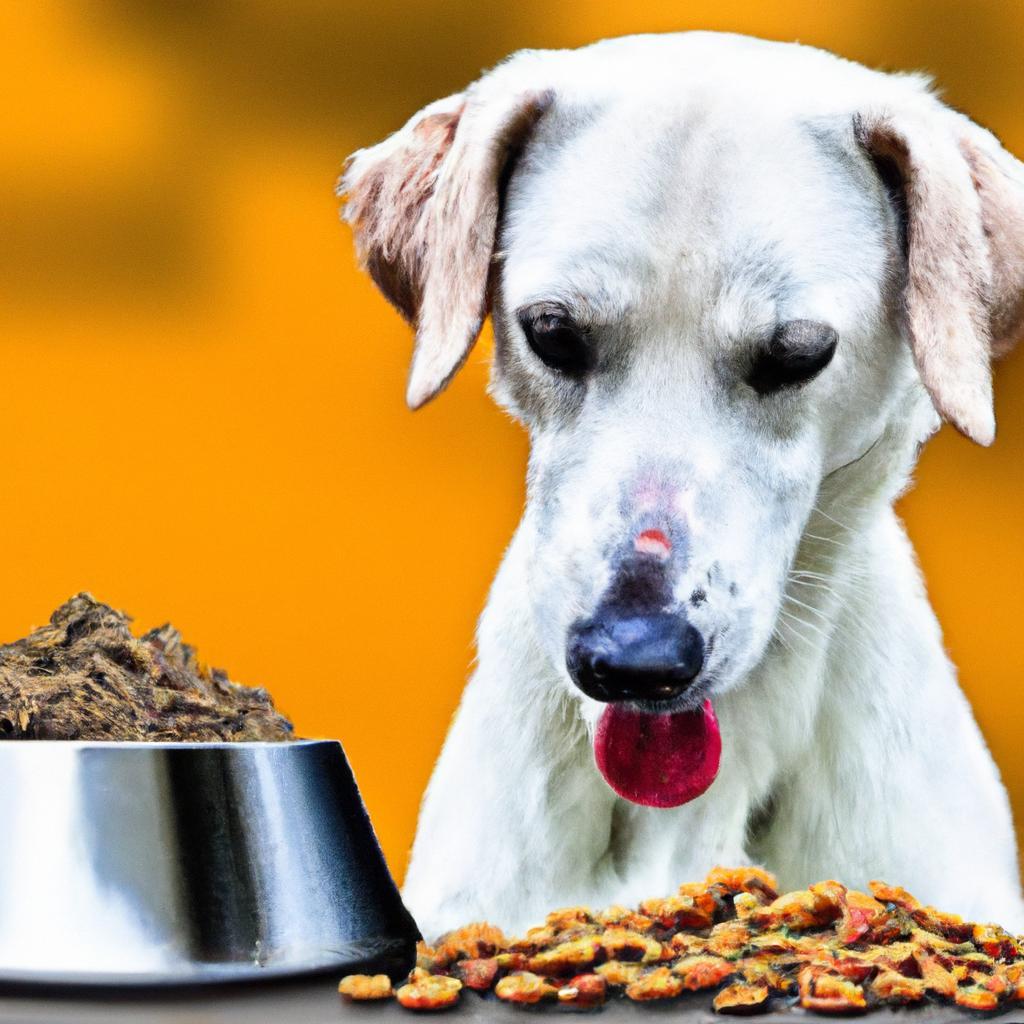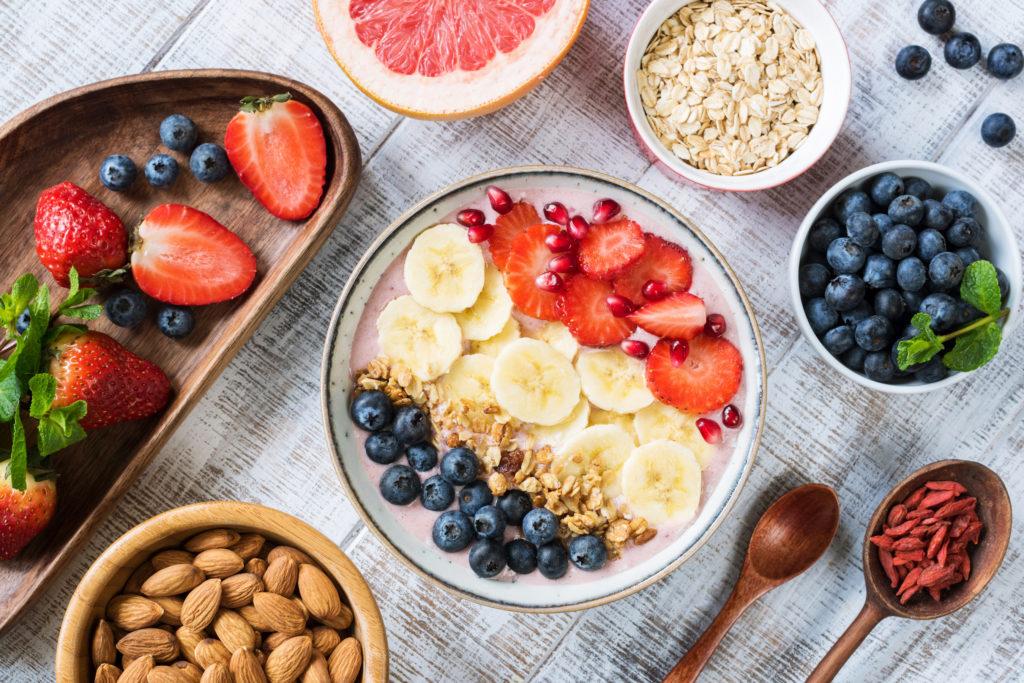Once upon a time in a cozy neighborhood, a playful golden retriever named Max thrived on a balanced diet, thanks to his owner’s dedication to proper feeding. Max’s meals consisted of high-quality dog food tailored to his age, size, and activity level, ensuring he received essential nutrients. Regular feeding times and fresh water kept him energized for daily adventures. By following general feeding recommendations, Max not only enjoyed a longer, healthier life but also became the neighborhood’s happiest pup. Invest in your dog’s well-being—because a healthy dog is a happy dog!
Contents
- Understanding Your Dogs Nutritional Needs for Optimal Health
- Choosing the Right Type of Dog Food for Every Life Stage
- Portion Control and Feeding Frequency for a Balanced Diet
- Common Feeding Mistakes to Avoid for Your Dogs Well-Being
- Q&A
Understanding Your Dogs Nutritional Needs for Optimal Health
Feeding your dog is not just about filling their bowl; it’s about providing a balanced diet that meets their specific needs. To ensure optimal health, it’s essential to consider factors such as age, size, breed, and activity level. Puppies, for instance, require a diet rich in protein and calories to support their rapid growth, while senior dogs may benefit from lower-calorie options to maintain a healthy weight. Understanding these differences is crucial for tailoring your dog’s diet appropriately.
When selecting dog food, look for products that meet the **Association of American Feed Control Officials (AAFCO)** standards. This ensures that the food provides complete and balanced nutrition. Additionally, consider the following key components of a dog’s diet:
- Proteins: Essential for muscle development and overall health.
- Fats: Provide energy and support skin and coat health.
- Carbohydrates: Offer a source of energy and aid in digestion.
- Vitamins and Minerals: Crucial for various bodily functions and immune support.
Portion control is another vital aspect of feeding your dog. Overfeeding can lead to obesity, which is linked to numerous health issues, including diabetes and joint problems. Consult your veterinarian to determine the appropriate serving size based on your dog’s weight and lifestyle. It’s also beneficial to establish a regular feeding schedule, as consistency can help regulate your dog’s metabolism and prevent overeating.
Lastly, always keep fresh water available for your dog. Hydration is just as important as nutrition, and clean water supports digestion and overall health. If you’re considering a change in your dog’s diet, do so gradually to avoid gastrointestinal upset. By being mindful of these feeding recommendations, you can help ensure your furry friend enjoys a long, healthy, and happy life.
Choosing the Right Type of Dog Food for Every Life Stage
When it comes to selecting the appropriate dog food, understanding your pet’s life stage is crucial. Puppies, adults, and senior dogs have distinct nutritional needs that must be met to ensure their health and well-being. **Puppies** require a diet rich in protein and calories to support their rapid growth and development. Look for formulas specifically designed for puppies, which often include higher levels of DHA for brain development and essential vitamins for a robust immune system.
As dogs transition into adulthood, their dietary requirements shift significantly. **Adult dogs** typically need a balanced diet that maintains their weight and supports their energy levels. Choose a high-quality dog food that lists meat as the first ingredient and contains a mix of carbohydrates, fats, and fiber. This balance helps maintain muscle mass and promotes overall health, ensuring your dog remains active and vibrant.
For **senior dogs**, the focus should be on maintaining health and preventing age-related issues. Senior dog food formulas often contain lower calories to prevent obesity, as older dogs tend to be less active. Additionally, these foods may include joint-supporting supplements like glucosamine and omega fatty acids to promote mobility and skin health. It’s essential to monitor your senior dog’s weight and adjust their food intake accordingly to keep them in optimal condition.
Regardless of your dog’s life stage, always consult with your veterinarian to tailor their diet to their specific needs. Regularly reassessing your dog’s food as they age ensures they receive the right nutrients at every stage of life. Remember, investing in high-quality dog food is an investment in your pet’s long-term health and happiness, making it a decision that should not be taken lightly.
Portion Control and Feeding Frequency for a Balanced Diet
Understanding the right portion sizes for your dog is crucial for maintaining their health and preventing obesity. Each dog is unique, with factors such as age, breed, weight, and activity level influencing their dietary needs. To ensure your furry friend receives the appropriate amount of food, consider the following guidelines:
- Consult with your veterinarian: They can provide tailored recommendations based on your dog’s specific health requirements.
- Follow feeding guidelines: Most commercial dog foods come with feeding charts that suggest daily portions based on your dog’s weight.
- Measure food accurately: Use a measuring cup to ensure you are providing the correct amount, avoiding the temptation to eyeball it.
Feeding frequency is another essential aspect of a balanced diet. Puppies typically require more frequent meals due to their rapid growth and energy needs, while adult dogs can thrive on fewer meals throughout the day. Here are some general recommendations for feeding frequency:
- Puppies (up to 6 months): 3-4 meals per day to support their growth and development.
- Adult dogs (1-7 years): 1-2 meals per day, depending on their size and energy levels.
- Senior dogs (7+ years): 1-2 meals per day, with adjustments made for any health concerns.
In addition to portion control and feeding frequency, it’s important to monitor your dog’s body condition regularly. A healthy dog should have a visible waist and be able to feel their ribs without excessive pressure. Adjusting portion sizes and meal frequency based on your dog’s condition can help maintain their ideal weight and overall health. Remember, consistency is key; stick to a routine that works for both you and your dog.
Lastly, consider incorporating healthy snacks and treats into your dog’s diet, but be mindful of their overall caloric intake. Treats should make up no more than 10% of your dog’s daily calories. Opt for nutritious options like fruits and vegetables, and always account for these extras when calculating their main meal portions. By prioritizing portion control and feeding frequency, you can ensure your dog enjoys a balanced diet that supports their long-term health and happiness.
Common Feeding Mistakes to Avoid for Your Dogs Well-Being
Feeding your dog may seem straightforward, but there are several common pitfalls that can negatively impact their health and well-being. One of the most prevalent mistakes is overfeeding. Many pet owners believe that giving their dogs extra food is a sign of love, but this can lead to obesity and related health issues. It’s essential to adhere to the recommended serving sizes based on your dog’s age, weight, and activity level. Regularly consult with your veterinarian to adjust portions as necessary.
Another frequent error is neglecting the importance of a balanced diet. Dogs require a mix of proteins, carbohydrates, fats, vitamins, and minerals to thrive. Relying solely on commercial dog food without checking the ingredient list can result in nutritional deficiencies. Always choose high-quality dog food that meets the standards set by the Association of American Feed Control Officials (AAFCO) and consider incorporating fresh fruits and vegetables as healthy treats.
Feeding your dog table scraps is another common mistake that can lead to digestive issues and behavioral problems. While it may be tempting to share your meal, many human foods are toxic to dogs or can upset their stomachs. Instead, stick to dog-safe treats and ensure that any snacks you offer are specifically formulated for canine consumption. This not only keeps your dog healthy but also reinforces good eating habits.
Lastly, failing to establish a consistent feeding schedule can disrupt your dog’s routine and lead to anxiety or overeating. Dogs thrive on predictability, so it’s crucial to feed them at the same times each day. This practice not only helps regulate their digestion but also strengthens the bond between you and your pet. By being mindful of these common feeding mistakes, you can significantly enhance your dog’s overall health and happiness.
Q&A
-
What type of food should I feed my dog?
Choosing the right food is crucial for your dog’s health. Opt for high-quality commercial dog food that meets the AAFCO (Association of American Feed Control Officials) standards. Look for options that list meat as the first ingredient and avoid fillers like corn and soy. You may also consider a balanced homemade diet or raw feeding, but consult your veterinarian to ensure nutritional adequacy.
-
How much should I feed my dog?
The amount of food depends on your dog’s age, weight, activity level, and overall health. Generally, follow the feeding guidelines on the dog food packaging as a starting point. Adjust portions based on your dog’s body condition and consult your veterinarian for personalized recommendations to maintain a healthy weight.
-
How often should I feed my dog?
Most adult dogs thrive on two meals a day, while puppies may require three to four smaller meals. Establishing a consistent feeding schedule helps regulate digestion and can prevent behavioral issues. Always ensure fresh water is available at all times, as hydration is equally important.
-
Can I give my dog treats?
Treats can be a great way to reward your dog, but moderation is key. Treats should not exceed 10% of your dog’s daily caloric intake. Choose healthy options, such as fruits and vegetables, or high-quality commercial treats. Always be mindful of any allergies or dietary restrictions your dog may have.
providing your dog with a balanced diet tailored to their specific needs is crucial for their health and happiness. By following these feeding recommendations, you can ensure your furry friend thrives and enjoys a long, vibrant life.




